Alba Boustanji is a young artist currently living in Amsterdam and studying Fine Arts at Gerrit Rietveld Academie. Her work covers many mediums, including movement, performance, and painting. In her work, Alba uses improvisation to react to the clash between humanity and the natural world. Through this process she allows the subconscious thoughts and feelings of the collective consciousness to emerge, resulting in abstract artworks which she then dedicates to nature. Recently her work has been reacting to the fast fashion industry, challenging fast-paced, consumer culture through elaborate, wearable, sculptures made from recycled materials. Subsequently, she performs in these pieces, creating a new discussion on the way we relate our bodies to both the materials on, and surrounding it.
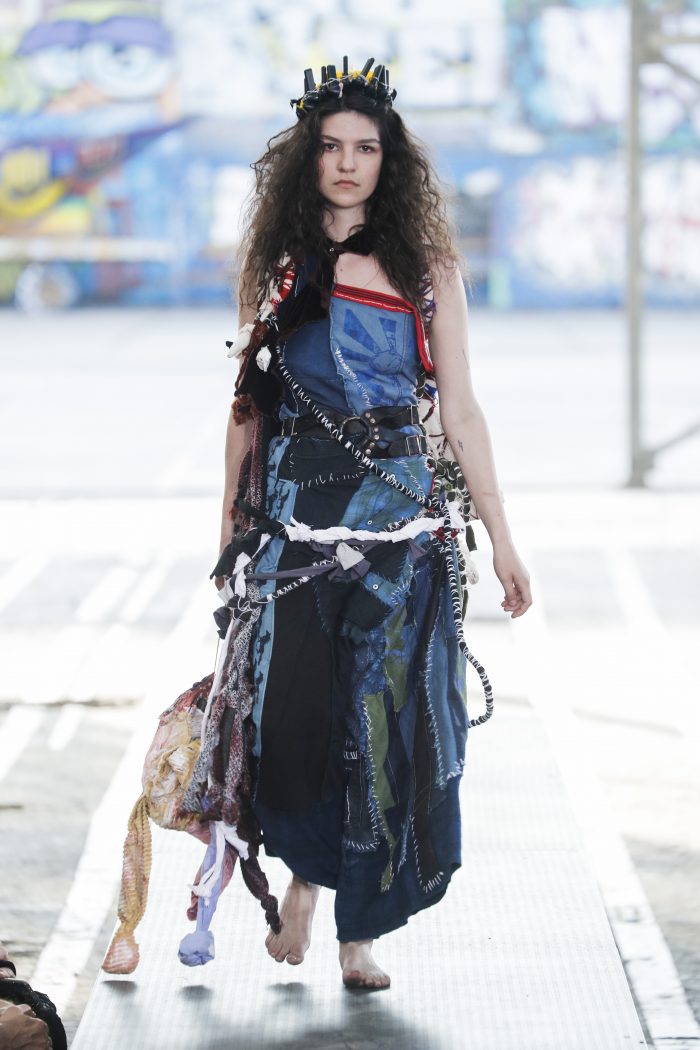
2018. Performer: Sofia Baytocheva. Photographed by Peter Stigter.
1. How does a new artwork begin for you? What inspires you to make something?
All begins with an idea in my mind about a certain situation, story, or thing I want to research. I take this as a starting point and start excavating my imagination. The process of making and researching the objects and actions I have in my mind is how I get to know the idea. As I delve deeper into making and researching it, the original image is brought to life. From this process I find out what wants/needs to stay and what will evolve, or merge, into something else. My process is very organic, with sometimes multiple ideas growing at once. Often things end up merging or influencing one another. In many ways, my creative process is deeply linked and inspired to nature. My art grows from a seed and is heavily influenced by the world around it, sometimes things become messy and tangled, or sometimes they know exactly where they need to go, no two projects are the same and eventually, like all life, they all come to an end.
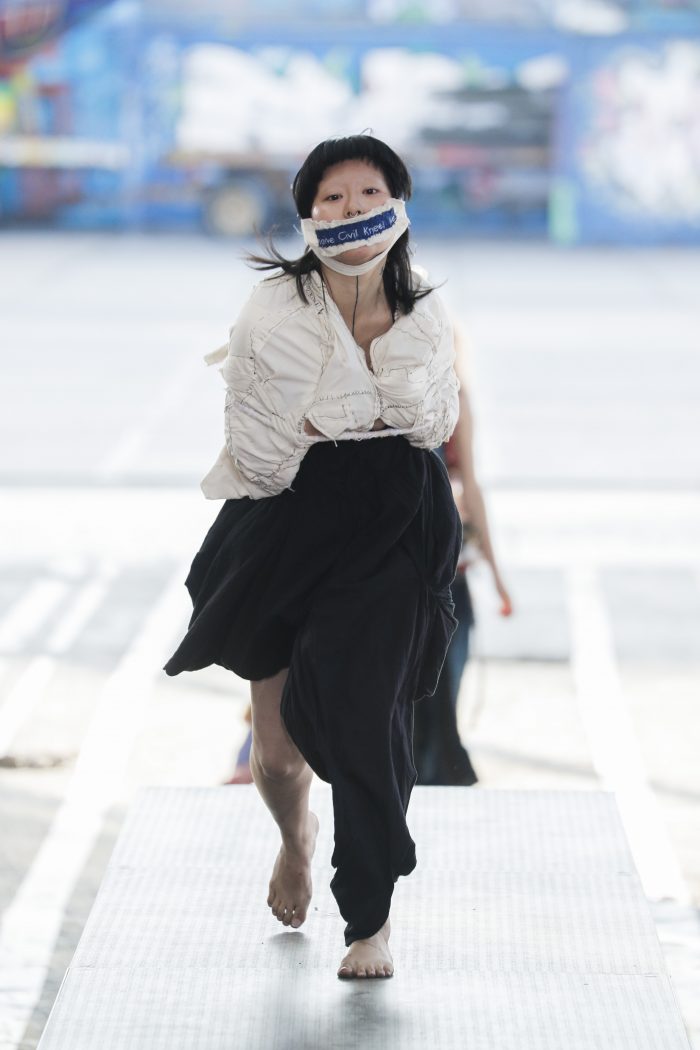
2018. Performer: Tia Yoon. Photographed by Peter Stigter.
2. In your practice, and for your performances, you create wearable items made of recycled materials which act as a protest against fast fashion. How do you understand the intersection of art, fashion and sustainability? In your opinion, what is the future of sustainable fashion?
The very term fashion is problematic as it lives off trends that come and go at increasing speeds. The ultimate goal is always to produce more, disregarding that what becomes unfashionable ends up in landfills or the ocean. I think the only possible future for fashion is one where each piece is firstly, made sustainably, and secondly, a piece of art.
Mass production and sustainability do not go together. This is because in the production chain of new garments every step requires vast amounts of water, packaging, and oil. For example the transportation required in between every step; from raw material to textile, to piece, to garment, to store, etc.
I believe designers should take this wasteful chain into their own hands, producing a selective amount of unique pieces, produced locally, with more care and attention. Hopefully, through this process garments will gain a new value, becoming like a painting to a painter. This process is needed to create a cultural shift in the way we think about our clothes. Fast fashion values having lots of new clothes often and cheaply. In the future I believe we should value unique, high-quality, pieces that last a long time. I also think we must look at the materials we are using to make clothes because many synthetic materials, when washed, release nanofibers of plastic into the ocean which can then not be filtered out.
For example, when a garment is made for a performance art piece, it is created for a specific person and situation. Its uniqueness gives it a character which cannot be achieved by mass produced clothing. The garment becomes a work of art which testifies to the imagination, intention, and craftsmanship, of its maker.
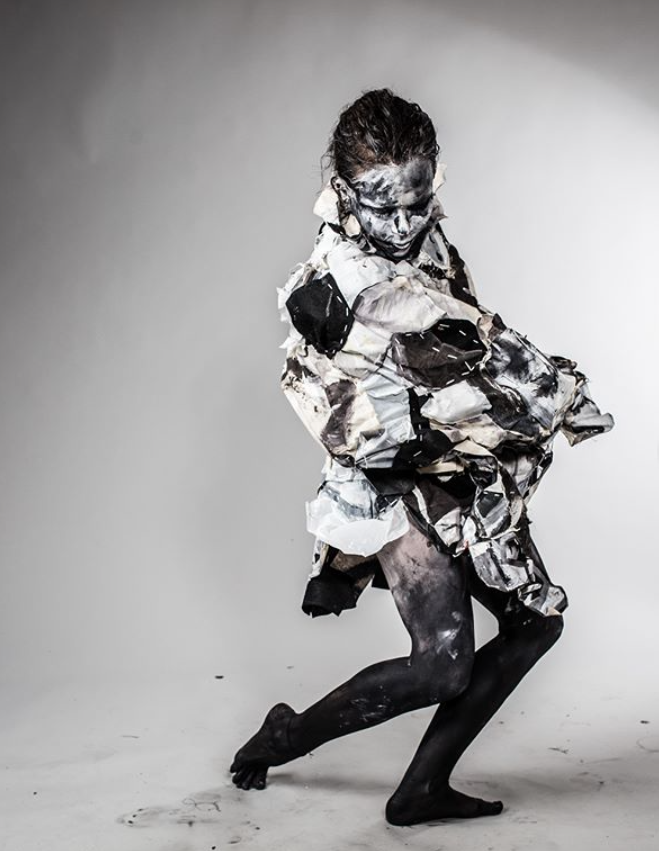
2018. Performance. Photographed by Anne Lakeman
3. Like designers in the fashion industry, artists are being pressured to constantly produce and sell more, thereby turning their work into capitalist commodities. What do you think about this struggle? How can artists reject or challenge these commercial production chains?
I am very worried about unconsciously falling into this system of ‘creating commodities’ in my art practice. However, in our capitalist society this can be very difficult not to do. Art in itself has become very elitist and can actually, in my opinion, sometimes be the epitome of capitalist consumption. This happens when the final product is valued over the effect of the work, when the artist is producing, rather than creating, and caring more for the material ‘reward’ at the end of it, rather than the process of creation itself.
To reject this trap it is important for artists to find their own rhythm of working, instead of continuously responding to external demands of time and quantity. I believe artists should constantly be growing and inventing themselves. It is dangerous to get stuck in a predictable phase or aesthetic as these eventually hollow out. Serendipitous magic in making comes from venturing into the unknown, from not being afraid to experiment and fail. When an artist relies too heavily on the final product, failure becomes unacceptable and too great a risk. Paradoxically this, in my opinion, kills an artist’s practise and turns them into capitalist producers. Staying true to oneself is the only way to defy the trap, especially when this means confronting people with issues they may not want to face.
I also think that the institutionalization of art is a problem that catalyzes turning art into entertainment commodities. Pushing art out of where it’s ‘supposed to be’ (ie. the gallery), can help reach people that maybe do not want to be reached or who would not willingly visit a gallery. It is especially important to reach those people, otherwise the ‘art bubble’ will just float around and turn into a vicious cycle of creating commodities for the people inside it. Street art can be a solution for this.
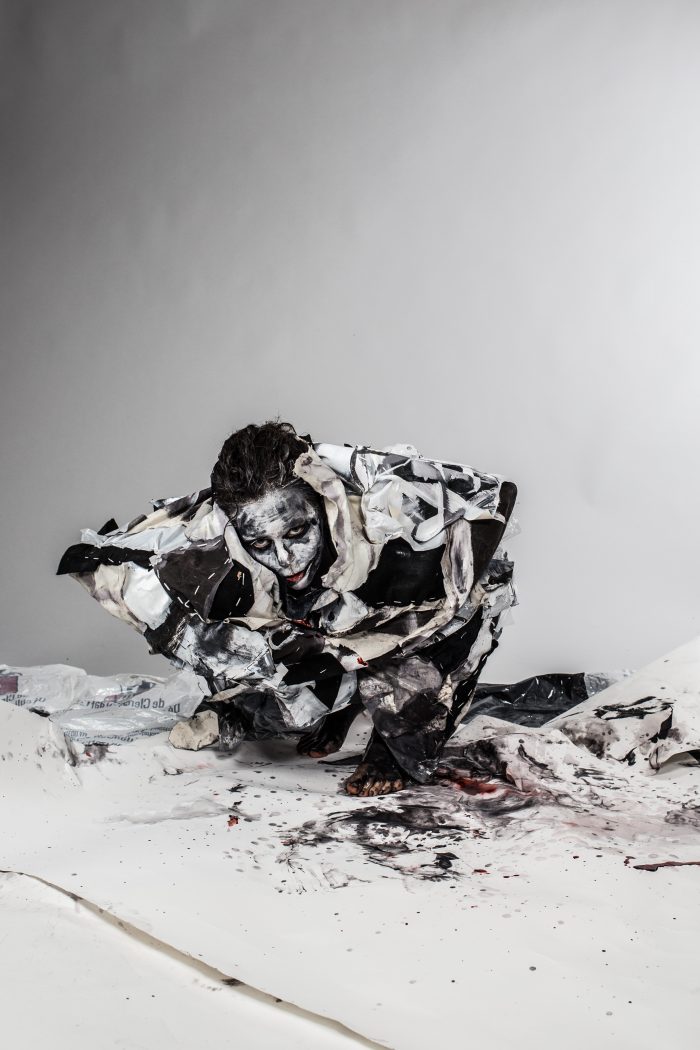
2018. Performance. Photographed by Anne Lakeman
4. As a performer you create finite experiences, compared to your paintings and sculptures which may last a very long time. How do you see the temporality of performance affecting the art piece and the audience?
In a performance, the energy of the artist(s) is transmitted to the audience and back. Among the performers and audience members themselves, energy is being transmitted. This exchange can then be built upon and played with, creating connections between people and the space they hold. A whole group can be transported somewhere totally different, whether it be a fairytale, different moment in time, or an unreached spot in the universe. Performance has the flexibility to warp time and space, allowing long distances and a whole lifetime to be condensed into an hour on a 3 x 3 stage. Temporality is performance’s greatest strength, and weakness, for it gives it the power to create intense, but finite, experiences.
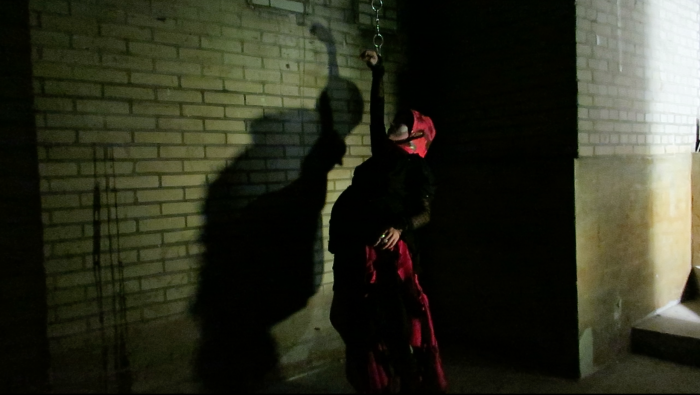
2018.Performance. Still from video by Sofia Baytocheva
5. Many of your projects originate from the central theme of water. Why do you think this is so important to you? What has working with water taught you?
I lived the first half of my life by the Mediterranean Sea just outside of Barcelona. I have always had a very close connection to the ocean, its underwater and alien worlds being an endless source of intrigue and inspiration. I love the feeling of being completely submerged in a large mass of water; the silence, pressure, softness, freedom of movement, density, and infinity, of space. I think in my art I am seeking for a similar kind of submersion, first in my own process, then in collaboration, and finally in the presentation for the viewer. I find so much beauty in the act of holding your breath underwater. As I push myself to the limit, I become stronger, and next time, I can hold my breath a little longer.
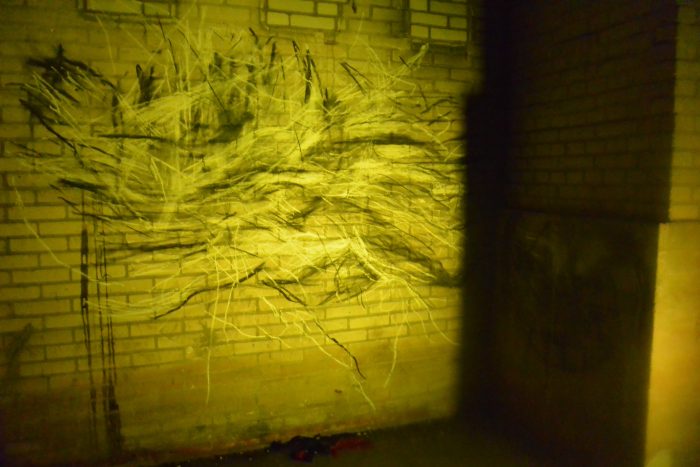
2018.Performance – Residue. Still from video by Sofia Baytocheva
Author: Carola Dixon